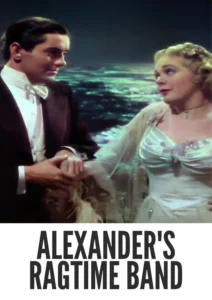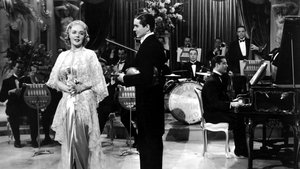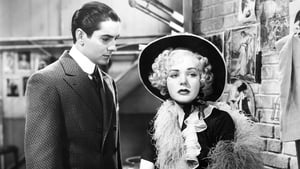Video Sources 0 Views
- Watch trailer
- Alexander's Ragtime Band 1938 Colorized


Synopsis
Table of Contents
ToggleFrom Ragtime to Romance: Alexander’s Ragtime Band (1938) in Dazzling Color

Step back in time to the golden age of musicals with Alexander’s Ragtime Band, a spectacular musical extravaganza from 1938, now beautifully colorized for a viewing experience that will sweep you off your feet. This film, directed by Henry King, tells a story of love, ambition, and the evolution of American music. Perfect for musical lovers and classic film buffs alike, this HD download offers a chance to witness a landmark film in stunning clarity. The movie is also known as Irving Berlin’s Alexander’s Ragtime Band.
Alexander’s Ragtime Band Storyline: A Century of Song and Dance
Alexander’s Ragtime Band follows the intertwined lives of Stella Kirby (Alice Faye), Roger Grant (Tyrone Power), and Alexander (Don Ameche) as they navigate the changing landscape of American music from the ragtime era to the swing era.The film begins in 1911 San Francisco, where Alexander, a talented violinist from a wealthy family, defies his family’s wishes to pursue a career in ragtime music. He forms a band with his friends, including Stella, a gifted singer with whom he falls in love. However, their relationship is tested by jealousy, ambition, and the challenges of the entertainment industry. As the years pass, their musical styles evolve, and they find themselves caught up in the changing trends of American music. Featuring classic songs and dazzling dance numbers, Alexander’s Ragtime Band celebrates the spirit of American innovation and the power of music to unite and inspire.
Movie Cast
The film features a stellar cast of actors who bring this musical journey to life:
- Tyrone Power as Roger Grant
- Alice Faye as Stella Kirby
- Don Ameche as Alexander
- Ethel Merman as Jerry Allen
- Jack Haley as Davey Lane
Movie Genre
Alexander’s Ragtime Band falls into the genre of musical, with elements of romance, drama, and historical fiction that capture the spirit of early 20th-century America. Its memorable songs, elaborate dance sequences, and sweeping scope make it a quintessential example of the Hollywood musical.
Historical Context: The Golden Age of Musicals
Released in 1938, Alexander’s Ragtime Band represents a high point in the golden age of Hollywood musicals. The film was produced during a time when movie studios were investing heavily in lavish productions that showcased the talents of popular singers, dancers, and composers. Alexander’s Ragtime Band was a major box-office success, solidifying the popularity of the musical genre and cementing the legacies of its stars.
Colorization Details
This colorized version of Alexander’s Ragtime Band has been meticulously restored using modern digital techniques, enhancing the visual appeal while preserving the film’s original charm and vibrancy. The colorization process involved carefully analyzing the grayscale tones of the original black and white footage and assigning appropriate colors to each scene. This painstaking process brings new life to the costumes, sets, and musical numbers, making the story even more captivating for modern audiences.
Technical Details
- Director: Henry King
- Screenplay: Kathryn Scola, Lamar Trotti
- Story: Irving Berlin
- Cinematography: J. Peverell Marley
- Edited by: Barbara McLean
- Production Company: 20th Century Fox
- Distributed by: 20th Century Fox
- Runtime: 106 minutes
Technical Specifications
- Download Format: MP4
- Resolution: HD (1080p)
- Compatibility: Compatible with most devices, including smartphones, tablets, computers, and smart TVs.
Reviews and Critical Reception
Alexander’s Ragtime Band (1938) was a major critical and commercial success, earning praise for its music, performances, and spectacle. The film was nominated for several Academy Awards, including Best Picture, and won for Best Musical Score. It remains a beloved classic of the musical genre.
FAQs
- Q: What is Alexander’s Ragtime Band about?
- A: Alexander’s Ragtime Band is a musical about the evolution of American music from ragtime to swing, and the intertwined lives of the musicians who shaped it.
- Q: Is Alexander’s Ragtime Band (1938) a well-known musical?
- A: Yes, Alexander’s Ragtime Band is a classic of the golden age of Hollywood musicals.
- Q: Is this version of Alexander’s Ragtime Band colorized?
- A: Yes, this version has been professionally colorized to enhance the viewing experience.
- Q: What makes Alexander’s Ragtime Band interesting for musical fans?
- A: Alexander’s Ragtime Band showcases the music, dance, and fashion of early 20th-century America, and features memorable performances by a talented cast.
- Q: What is the download format?
- A: The download format is MP4, which is compatible with most devices.
- Q: What resolution is the download?
- A: The resolution is HD (1080p), providing a high-quality viewing experience.
Download Now in HD!
Watch Alexander’s Ragtime Band Today!













